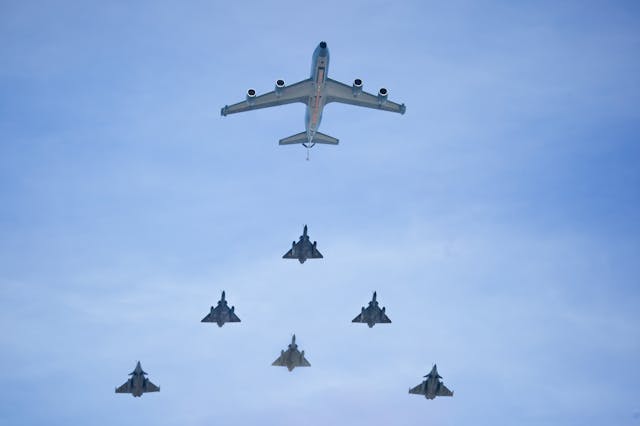It has very high stakes for aerospace and defense systems. Aerospace and defense industries, to be safe, reliable, and operationally efficient, it has to perform under extreme conditions. Thus, it is a very critical step towards the verification of high power testing with regard to performance, durability, and safety. These are basically the systems used in aircraft, missile systems, and radar equipment, among others; ensuring critical systems work in such harsh environments. Let’s discuss why high power testing is critical for aerospace and defense systems.
1. Ensures Safety and Reliability in Critical Environments
Safety and reliability are not negotiable when it comes to aerospace and defense industries. They have the systems operating under extreme conditions such as high altitudes, extreme temperatures, vibrations, and a high-stress environment. Therefore, these systems should not fail under such conditions through high power testing. In the case of military aircraft, system failures are catastrophic. High power testing simulates these demanding conditions to identify potential failure points and vulnerabilities, and remedies are provided before deploying the system. This leads to a safer, more reliable system for civilian and military use.
2. Industry Standards and Compliance
Industry standards and regulatory requirements in aerospace and defense systems are at their peak levels. The requirement of high power testing is crucial in meeting the same standards for safety and performance. It is the FAA, MoD, and other similar regulatory bodies which set strict guidelines so that these systems of aerospace do not fail at extreme conditions. High power testing checks whether critical components meet the standards, such as electric performance, thermal resistance, and mechanical strength. In this way, the manufacturers can ensure that their systems are safe and reliable, hence reducing the chance of regulatory non-compliance.
3. Improved Performance and Efficiency of Aerospace Systems
High power testing is not only about safety and reliability but also about improving the performance and efficiency of aerospace and defense systems. High power than the norm gives the manufacturer a way to push the system through limits to ascertain performance, as it does include how much the systems consume the power, produce heat, and work at high efficiency. This makes engineers have optimized designs concerning reduced energy, reduced heat generated, and even better efficiency when working. Thus, the main point for military aircraft is fuel efficiency and operating cost. Optimized systems have fewer lifecycle costs as well as greater readiness for operation.
4. Detects Potential Failures Before It Is Ready For Deployment
High power testing is aimed to identify areas in systems where potential failures may take place before such systems are even deployed. Aerospace systems operate under conditions that are hostile: high and low temperatures, vibration, and shock. High power testing can identify overheating, electrical failure, and structural weaknesses. It is the early solving of the problems, therefore ensuring that in the real conditions of operation, the systems would function as required. This reduces expensive failures that would have arisen. This also means that such systems are built for high reliability in their maintenance and repair costs.
5. Prolonged System Life with Low Downtime
Testing of high power is the primary foundation for prolonging the life of aerospace and defense systems. Therefore, these products and systems can confirm the durability of the critical components submitted to high power conditions. The systems will consequently serve for long durations. Long service times mean less maintenance and repairs. Their lifecycle costs come down. Extended operational lives are indeed very paramount especially to the aerospace, military aircraft, and associated equipment. The use of high-power testing also ensures high overall availability with fewer downtimes and ensures that a system is running and efficient.
6. Enables innovation and development of new advanced technologies
Both the aerospace and defense industries are innovative. The development of new technologies requires extreme conditions that any new design, materials, and systems must be able to withstand and these are simulated by high-power testing. It is very vital for next-generation aircraft, missile systems, and radar technologies. The high power test gives an engineer the capacity to test their ideas, material, and design even before coming to life as performance, safety, and strength could be gauged well before it ever occurs in real applications. The push toward aerospace and defense technology does warrant a serious necessity for a powerful high-power testing as its progression.
7. Ensures Readiness and Security in Operations
Readiness and security are extremely critical for aerospace and defense operations. High power testing ensures that all the defense systems, such as communication systems, navigation, radar, and weapon systems, function appropriately under extreme conditions. This is particularly critical in military operations, where system failure can be devastating. The validation of the performance of a system under high power conditions assures that personnel are safe and that missions are secure. Such systems are demonstrated to operate as intended under high power testing, therefore giving confidence in their performance at the time of need.
High power testing is a must-have component in aerospace and defense systems. It ensures safety, reliability, and industrial standards. Simulation of extreme conditions improves the performance, productivity, and life expectancy of systems and reduces downtime, maintenance cost, and lifecycle cost. It can identify failure points before the system is put into operation and, therefore, enhance operational readiness and safety. High power testing would remain an inherent requirement with advancement in the aerospace and defense sectors in their performance to raise the safety of these systems which protect lives and make future innovations possible.







